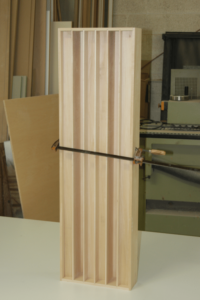If you know about diffusion then you know it is essential for your studio or listening room to have but is also expensive. That’s why a DIY audio diffuser is often the best route you can go in helping you with the poor diffusion you have in your music room.
So what type of DIY audio diffuser do you need and where should you put it in your room? How many units should you build and do they go on one wall surface or is it better to cover two walls? These are questions you will have and they are valid ones that need answering before you undertake a project of this magnitude. Lets start at the beginning, and examine the reasons why you need diffusion.
Why A DIY Audio Diffuser Solution?
Building your own DIY audio diffuser will help you to deal with poor room diffusion which is one of the four main room acoustic distortions that must dealt with in small room acoustics. Room modes, SBIE (speaker boundary interference effect), and comb filtering round out the four main distortions all of us must deal with in our personal listening, home theater, or professional recording studios.
The following video demonstrates our DIY Sound Diffusor plans being put together.
Reflections from our room boundary surfaces contain useful information that must be managed properly and a DIY audio diffuser will help you minimize the impact of reflections at the listening or monitoring position. The direct sound from our speakers and the reflections from our room boundary surfaces, all add together to give us total room sound which is what we hear.
The DIY Sound Diffusor QD 11 is available to buy by clicking here.
No More Absorption
Absorption has been the standard way to minimize the impact of reflections and to lower the reverberation times within our room that reflections produce. The problem with absorption is that it changes your sound to heat in order to reduce the strength of the reflection and once that energy transformation occurs, your music is gone forever. It has been converted to heat. Do you really want to lose energy and music in order to manage the reflections that mix with our direct wanted energy from our loudspeakers? Do you want to create a room that is acoustically dead from too much absorption or do you want a room that is full of sound and comes alive with the music in it?
Real Diffusion
Diffusion comes in many forms but you must make sure you are using and building in your DIY audio diffuser a real diffuser not just a device that will redirect sound to different positions in the room. Many acoustic products manufacturers label their products as diffusers but they don’t diffuse anything except the money out of your wallet.
A quadratic diffuser is a real sound absorbing technology that has been around for years and is used extensively by the professionals in studio builds for over 40 years. A quadratic diffuser is a series of wells or troughs of different depths, that when sound energy enters each well, it is placed back into the room in a fan like array of energy that is smooth and uniform representing all the frequencies that the diffuser was designed to create. Yes, you can choose the frequency range you wish to diffuse in your room based on the musical usage of your room.
DIY Diffuser Build
Build Your Own
What if you could build your own DIY audio diffuser and someone would take all of the guesswork out of building your DIY audio diffuser? What if you could have all the individual pieces pre cut and even pre finished for you? What if you could choose the correct diffusion sequence for your room and have every piece cut and finished for you? What if each piece came packaged together right to your door step and all you had to do was glue them all together, no screws, nails, or cutting wood, just glue each piece together. You could glue each piece together in three steps by following the prepared assembly video where each step of the assembly process is documented on video?
Well with our DIY sound diffuser plans you can do just that. Click here to check out our plans and start making an important change to your enjoyment of your audio today.










There may be apps that do that. You can definitely find spectrum analyzers that will measure ultra low.
Is there an APP that can measure the ultra low frequency levels?
.Plaster is a viable middle and high frequency absorber. We have used it many times in new builds that have…
Hi Dennis I'm curious what you think of acoustic perforated plaster - say CST Galaxy -on particularly ceilings in music…